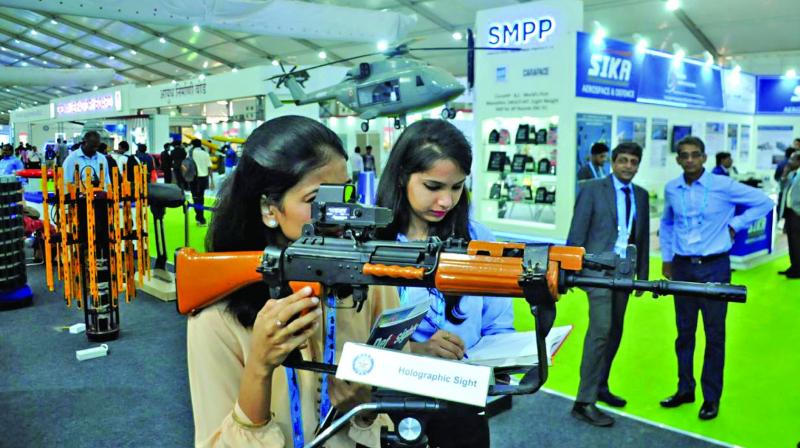Lockheed to make F-16 in India

Chennai: Eyeing IAF’s order of 110 fighter jets, the US-based aerospace and defence manufacturers, Lockheed Martin had all set to shift its F-16 fighter jet manufacturing unit from USA to India.
However, the manufacturing giant is yet to ascertain the location where the jets will be made. “We are in the process of identifying the location and the move will encourage ‘make in India’ policy,” Vivek Lall, vice president, Strategy and Business Development, Lockheed Martin, told Deccan Chronicle on the sidelines of DefExpo in Chennai.
He also said that the F-16 jets, which have been fighting with Boeing's F/A 18 Super Hornet for Indian order, are not only superior in the quality but also perform robust operations. “The F-16s are operation ready jets,” Vivek added.
Meanwhile, Thomas E. Breckenridge, vice-president, India, Global Sales Defence, Space and Security of Boeing, said that they are in the race of acquiring the orders of IAF (Indian Air Force) to procure 110 fighter jets. “Our F/A 18 Super Hornet fighter jets are cheaper than F-16 and can be maintained at lower cost,” he said.
Lockheed Martin has produced 4588 F-16 jets, whereas Boeing has manufactured 700 aircrafts which are being used by US and Australian defence forces.
When inquired about the Lockheed Martin’s forage into the country, Breckenridge said that the Boeing would also source the components from Indian companies. “We have been sourcing Indian components from 160 companies. Apart from sourcing the components, Boeing will also enter into a major joint venture in India,” he added.
Breckenridge also added that Boeing had identified its Indian partner to build a factory in India. “The joint venture will be announced in the ongoing DefExpo on Thursday,” Mr Breckenridge said.
He also added that the Super Hornet could be used by both Indian Navy and Indian Air Force. He said that the plan is to have all new plant in India, unlike Lockheed Martin which is planning to shift its entire plant at Fort Wentworth to India.
Ascertaining the Super Hornet's operating capabilities; Thomas E. Breckenridge said the Super Hornet’s can be operated from Short Takeoff, But Arrested Recovery (Stobar) in Indian Navy's aircraft carrier INS Vikaramaditya. “We had visited the naval vessels and it is possible for Super Hornet to take off from the Indian naval ship,” he explained.
Super Hornet is operated on US carriers, which use Catobar, where the aircraft takes-off using its own power rather than with the help of a catapult based aircraft launch mission. “We have also done simulations and analysis to ensure Super Hornet’s ability accordingly to Stobar take-off,” he said.
While Lockheed Martin has been planning to shift its unit to India, Boeing has envisaged expanding its operations in India by enhancing its Indian partners from 160 to 400, according to Breckenridge.
“We have an overall expansion of engineering force to 3,000 in Bangalore, Hyderabad and Chennai. Boeing is also in partnership with IIT and Indian Institute of science and other academic institutions,” Pratyush Kumar, president, Boeing India.

